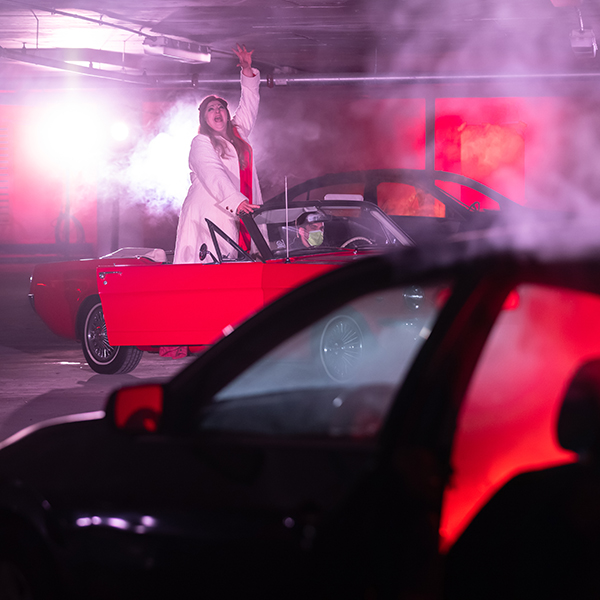June 15, 2021
Things You Might Not Know About Twilight: Gods
Twilight: Gods isn’t your standard operatic production. This reimagined version of Wagner’s Götterdämmerung (Twilight of the Gods) took place underground in the Millennium Lakeside Parking Garage in late April and early May; critics and audiences alike loved the drive-through experience.
What does it take to put together an offsite, unconventional production like Twilight: Gods with strict safety and health protocols in place? A lot of adaptive strategies and thinking outside the opera-house box, for sure. Here are a few things you might not know about Twilight: Gods, some of which Lyric didn't even know until the company put together an opera in a garage!
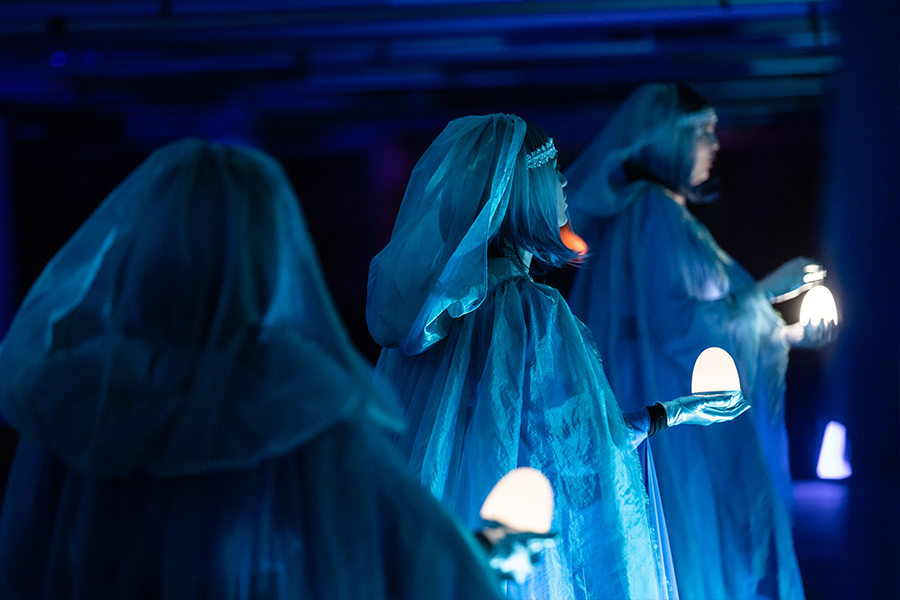
The Rhinemaidens (Maria Novella Malfatti, Katherine Beck, and Kathleen Felty, from left to right).
1. Since this production was conceived and performed during the ongoing pandemic, Lyric took all possible precautions to make sure singers, musicians, and staff remained safe and healthy. More than 600 COVID tests were arranged throughout the process of putting Twilight: Gods together, and everyone remained healthy and well.
2. For opera performances at the acoustically-wonderful Lyric Opera House, singers aren't amplified. In a parking garage, it's a whole different story. Every soloist in Twilight: Gods wore a wireless microphone. Please see #3 for more detail on why.
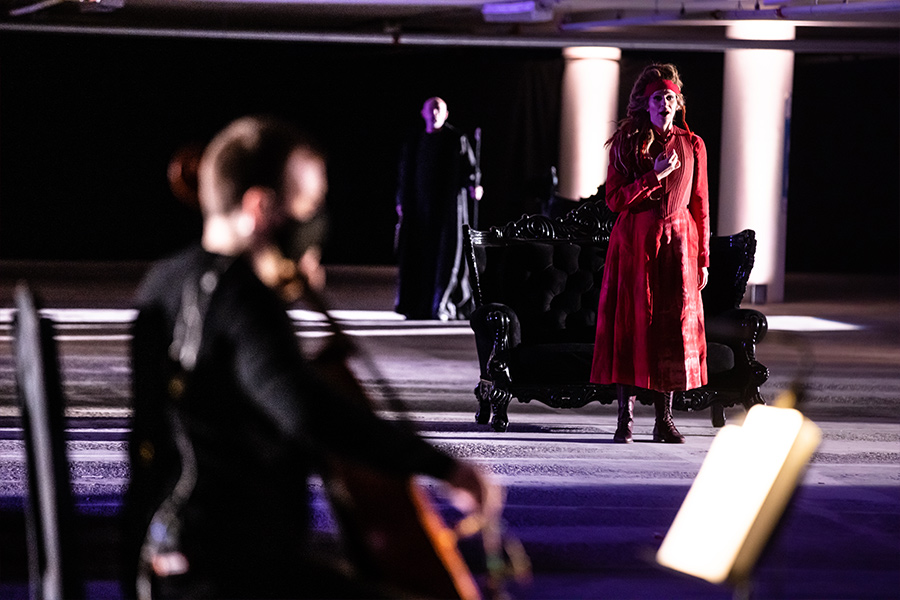
Mezzo-soprano Catherine Martin portrays Waltraute with actor Henson Keys in the silent role of Wotan. Accompanying them is cellist Calum Cook.
3. Audience members listened to Twilight: Gods on their car radios, tuning to different radio frequencies for each scene. Car windows had to be closed throughout the performance while each group of nine cars traveled from scene to scene, which posed incredible audio challenges.
- The live music performed in several scenes by soloists and by members of the Lyric Opera Orchestra was arranged and orchestrated by Ed Windels
- The transitional music and funeral-procession music was created by sound artist Lewis Pesacov (working from Los Angeles)
- Scat-singing and narrative poetry by avery r. young was pre-recorded and sent to Pesacov, who mastered and integrated the oral and instrumental components
- Sound designer Mark Grey incorporated Pesacov’s audio files into the sound design, so they would play at the proper times and levels between the live-performance scenes throughout the show.
Sound operators at each scene coordinated the cues between live performance and recorded audio. The resulting aural experience was impressively seamless. Whew!
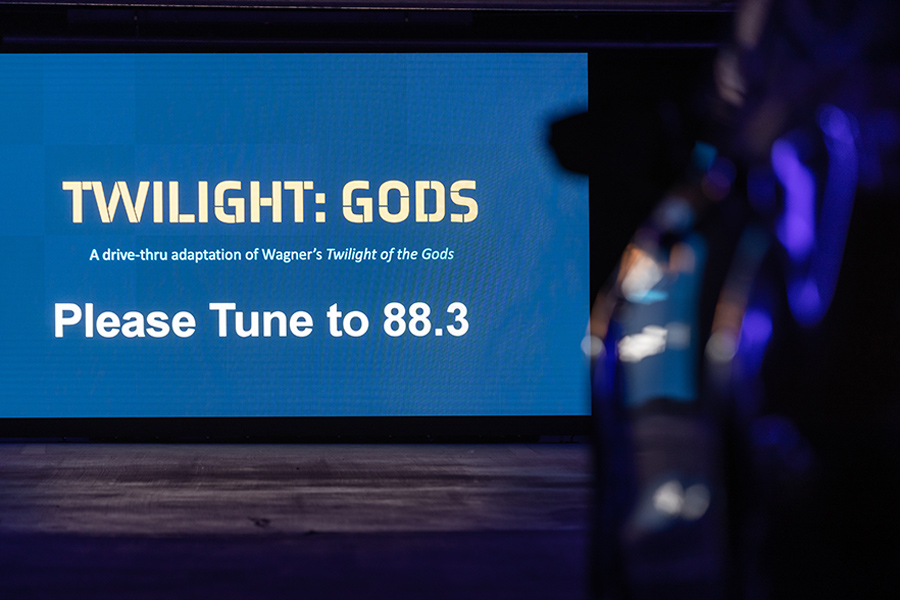
4. An underground garage is a chilly place, even on a balmy spring day. Costumes had to be warm enough to keep the artists cozy for several hours. Dressers had lap blankets and space heaters at the ready.
5. The wardrobe team who created the costumes consisted of two cutters and drapers, two stitchers, one custom dyer, three shoppers for fabrics, purchased items, and accessories; plus four fitters to adjust the costumes for the artists and dancers. There were ten dressers on hand for each performance in the garage. Larger productions with a full chorus and supernumeraries call for a larger wardrobe team and also more wig and makeup artists.
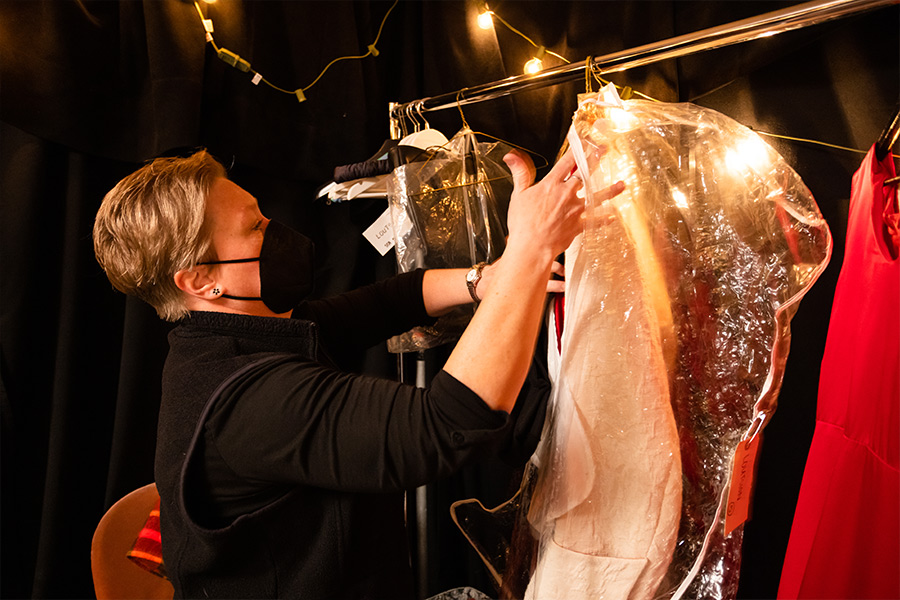
Wendy McKay, a longtime member of Lyric's wardrobe staff, prepares Christine Goerke's costume for Brünnhilde's immolation scene at the end of Twilight: Gods.
6. Soprano Christine Goerke, among the world’s top Brünnhildes, wore a custom-made wig that took about 100 hours to create, including dyeing and styling. Not even a winged horse (or in this case, a 1965 Mustang convertible) could mess up her hair!
7. The artists performed their intense short scenes (under ten minutes long) 14 times over the course of each performance date. Christine Goerke’s dresser, Wendy McKay, came up with a clever way to keep track of how many times the soprano had sung the finale (a.k.a. the immolation scene): a stack of 14 playing cards, ace through the king of diamonds plus the joker, turning over one card for every completed scene.
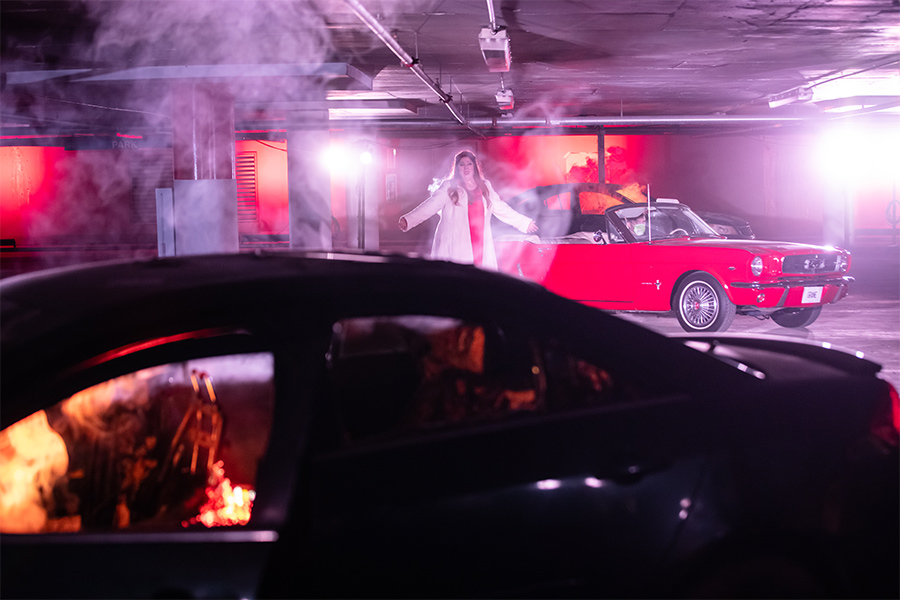
Christine Goerke performs as Brünnhilde, riding in on a 1965 Mustang convertible.
8. Some of the most visually stunning images emerged from Siegfried’s funeral procession, with over 2,880 battery-powered candles illuminating the scene. It took 5,760 batteries to keep the candles lit, and it took two electricians at least an hour to illuminate all the candles using remote-control wands. Fortunately, the batteries lasted through all the rehearsals and performances, as it would’ve taken more than ten hours to replace them.
9. How does one convey the tone of a scene in a parking garage? Through atmospheric lighting, of course! Lyric rented 200 blue uplights from one of the largest theatrical rental houses in the U.S., to illuminate columns throughout the garage, but it wasn’t quite enough. Fortunately, a Chicago rental house provided additional illumination. The battery-operated uplights had to be collected and recharged each night.
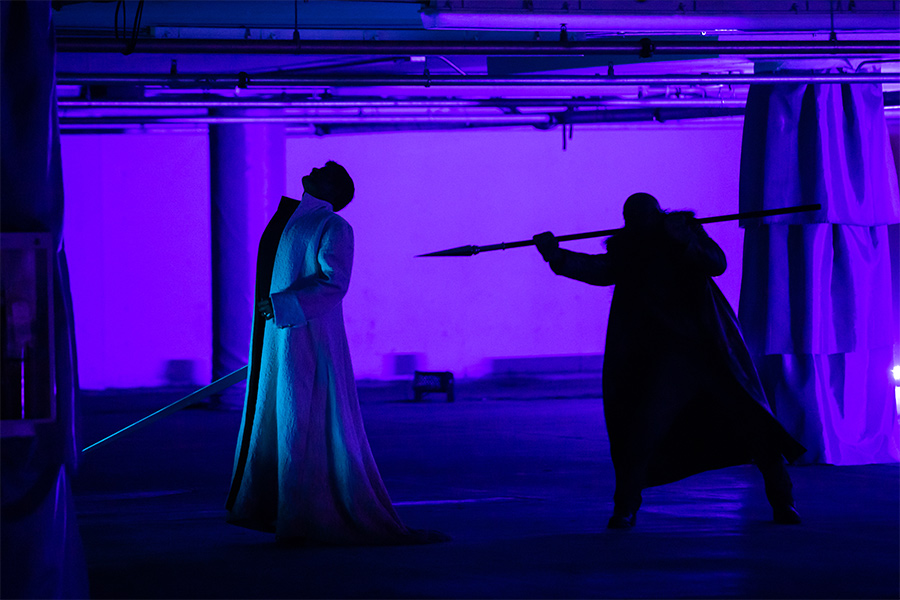
Sean Panikkar as Siegfried (left), and Donald Fitzdarryl as Hagen's double (right).
10. As big as Lyric’s mainstage is, it’s nothing compared to the 13-acre underground sprawl in which Twilight: Gods was staged. Savvy members of the technical staff and crew brought their own bikes or scooters to navigate the vast space, even making rolling deliveries of missing props and music stands during performances without interrupting the flow of audience traffic. Crew members who didn’t BYOBoS (bring your own bike or scooter) averaged over 30,000 steps a day.
11. To ensure the safety of stage management, volunteers, and performers, a 3 MPH speed limit was set for Twilight: Gods. Dozens of Lyric administrative staff members and stagehands donned jumpsuits and reflective armbands to direct traffic throughout the vast performance space.
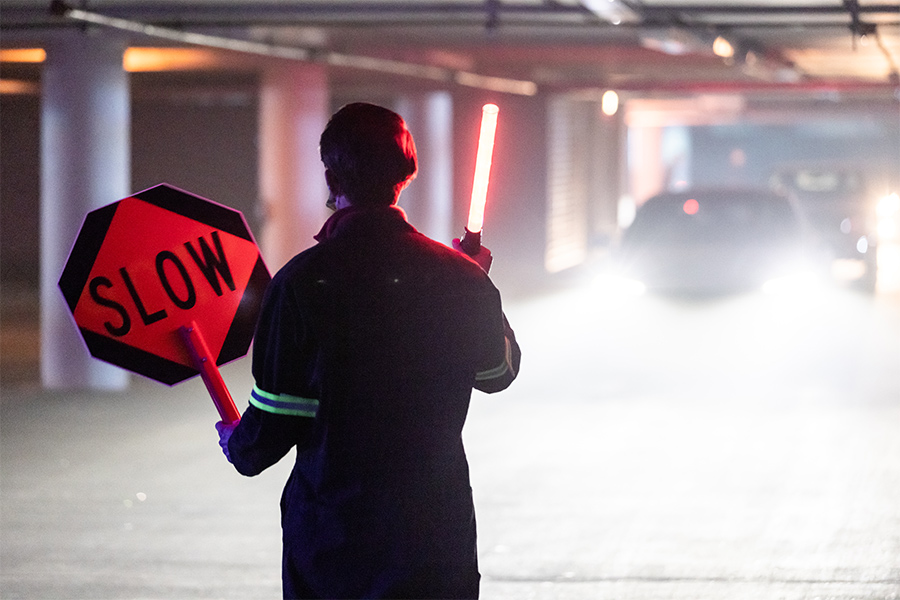
12. Because this production took place a mile from the Lyric Opera House, the company had to transport all of the set pieces, lighting equipment, sound equipment, tables, chairs, music stands, makeshift dressing rooms, and more. Loading in all of the materials took five vans, two box trucks, and a trailer.
If you didn’t get a chance to see Twilight: Gods at the Millennium Lakeside Parking Garage, or if you would like to experience this fantastic production again, you’re in luck! A filmed version of Twilight: Gods will be released this summer. Watch this space for more information!
Twilight: Gods
Twilight: Gods
Experience an original film that captures Lyric's sold-out Chicago premiere of Twilight: Gods, a reimagining of the final chapter of Wagner's epic Ring cycle.
Filmed during the live production at Millennium Park Lakeside Garage in Spring 2021, this unique, drive-through experience was conceived by director Yuval Sharon, who wrote the new English texts, and features poetic transitions written and performed by Chicago interdisciplinary artist avery r. young. Chicago filmmaker Raphael S. Nash has created this original new feature from the critically-acclaimed production and it showcases the performances, video work and installations brought to life by singers, instrumental groups, and actors.

